
Last week, in my first visit to the Loch Lomond and Trossachs National Park for months, I went for a walk over the hills to the west of Lochgoilhead. The scenery above 2000ft is fantastic, wild and unspoilt and there are places where you feel you are in a landscape worthy of a National Park – if it was not for the overgrazing.
There are magnificent landslips caused by hillsides collapsing as the glaciers retreated.
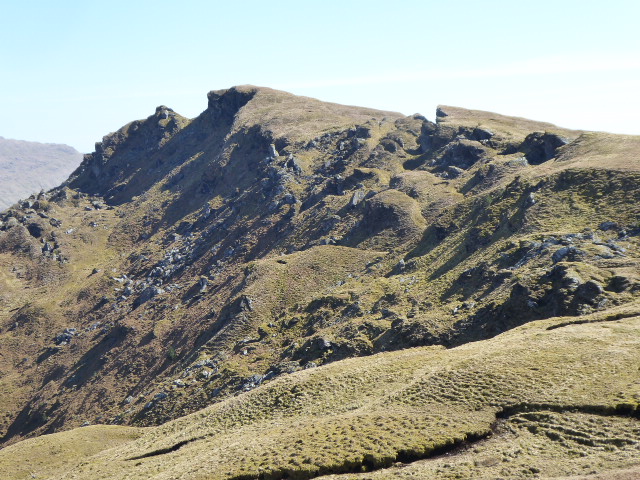
The ground is very rough underfoot, there is hardly a trace of a path and most of the hill tops still lack a cairn, all of which add to the sense of wildness.

Wild, though, is not the same as rewilding. While there was a sea eagle over one top, the furthest south I have seen one on the mainland, there appeared almost nothing for it to eat apart from lambs born on the hill. The more wildlife we wipe out, the less food there is for what remains and the inevitable consequence is conflict between humans and other predators.
There were plenty of signs of ecological degradation on the upper slopes, much of it on land owned and managed by Forest and Land Scotland (FLS):
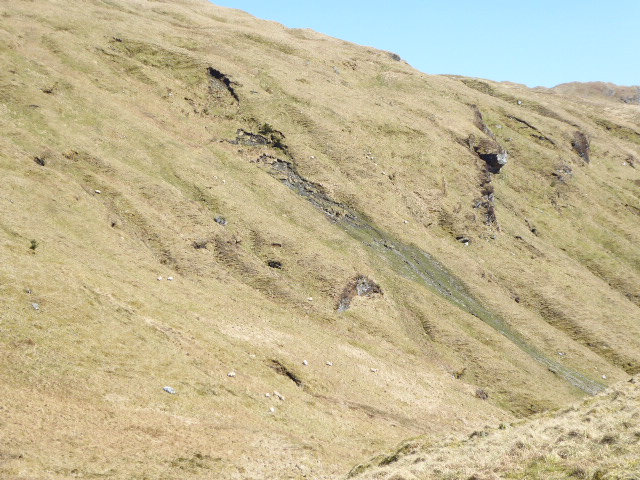
The largest destruction, however, lies below. The reason these hills are unfrequented is not so much that they fail to reach Munro or Corbett height, it is that they are very hard to get to because of the forestry. Much of the area around the head of Loch Goil has now been turned into one enormous holiday village, but this is cut off from the hills above by blanket forestry.

Almost no provision was made for outdoor recreation when this area was first planted and, if people want to access the hill, they are forced to take one of the forest roads, hardly an attractive proposition.
What struck me, walking the forest road from above Lettermay to Gleann Canachdeann, is the ongoing destruction of the landscape by FLS and the fact that the creation of the Loch Lomond and Trossachs National Park Authority (LLTNPA) has done nothing to stop this.
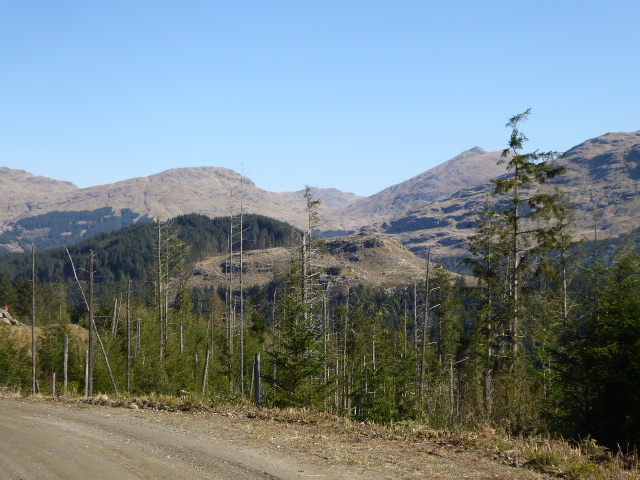
The first section connecting Lettermay to an older forestry road is relatively recent. It is not shown on my 1:50,000 map dating from 2011. It was built, according to the Lochgoilhead Forest Plan (see here) so that timber lorries could avoid taking the narrow public road by the holiday village below. Once you are on it, there is no escape up or down.
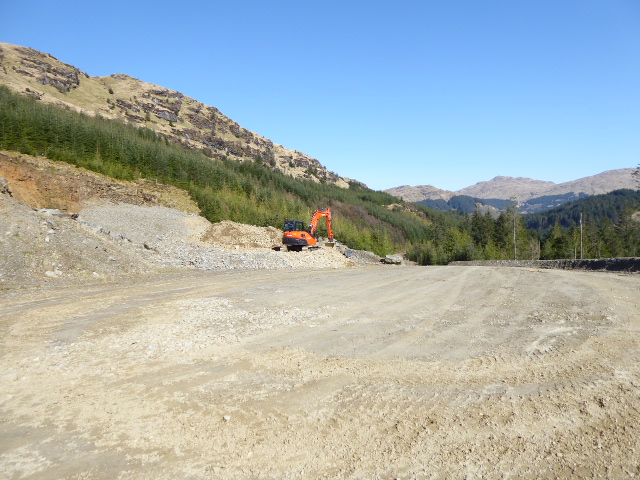
Not far along the road expands to a gigantic width as you reach a working quarry. The bigger the road, the bigger the quarry.
There is no mention of this (or any of the other quarries I saw) on the LLTNPA’s Planning Portal so it appears that Forestry and Land Scotland started working this quarry prior to 2014 before notification to the Planning Authority was required.
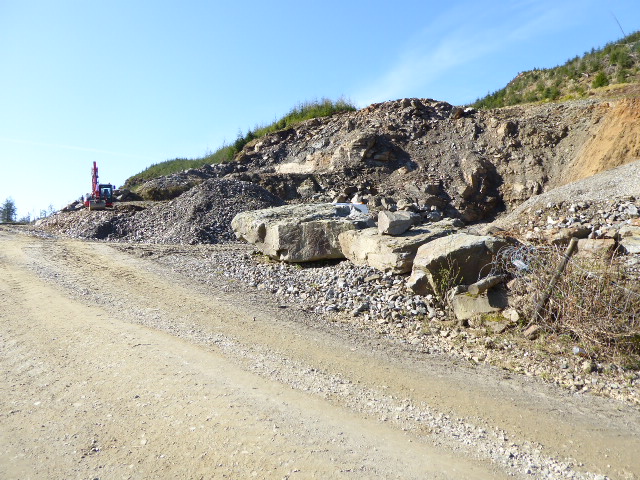
The way that forestry is regulated in our National Parks currently means there is nothing to prevent Forestry and Land Scotland taking great chunks out of the hill side indefinitely. While in England and Wales a long history of campaigning has helped limit quarrying operations in National Parks, when it comes to forestry and Scotland there appear to be no limits.

The forestry road is not just wider than the section of public road it bypasses, it is wider than the two public roads that lead out of Lochgoilhead, through the Hell’s Glen or to the Rest and Be Thankful. If timber lorries can use those public roads, why do the roads within the forest need to be so large?

The best answer is that Forest and Land Scotland has almost unfettered power and has long thought it knows best. With advances in technology, large forest roads became easy to construct and – whether needed or not – have become seen by the forestry industry as an indication of human power to control the landscape. That they have often got it wrong is illustrated by this quote from the Lochgoilhead Forest concept map (see here):
“Some planned fell coupes are impractical and inaccessible”
Why were they ever planted then? The wastage in the industrial forestry system is staggering. Hundreds of hectares of larch have been felled in the National Park to prevent the Phytopthera Ramorum spreading, including within the Lochgoilhead Forest Plan area.
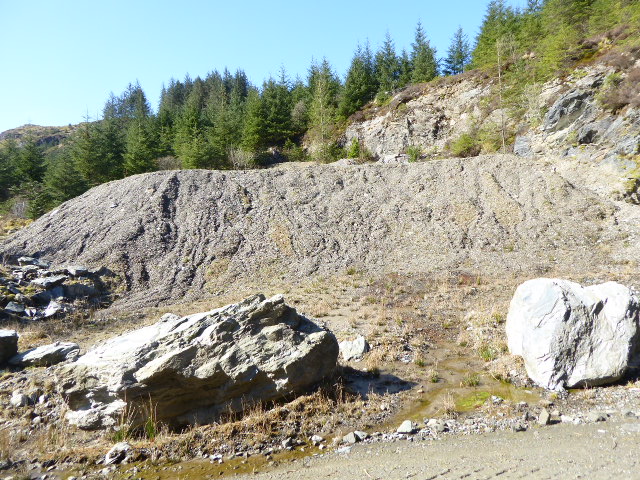
A little further along there was another quarry by the road, now blocked off, which contained a large pile of small grade material which appears very similar to that in the newer quarry. Leaving it in place to erode provides an excuse for FLS not to restore the quarry or allow it to re-wild.

Emerging from the confinement of the conifer forest, a fourth quarry comes into view on the other side of the glen, hidden from the road below, but another sizable chunk taken out of the landscape.
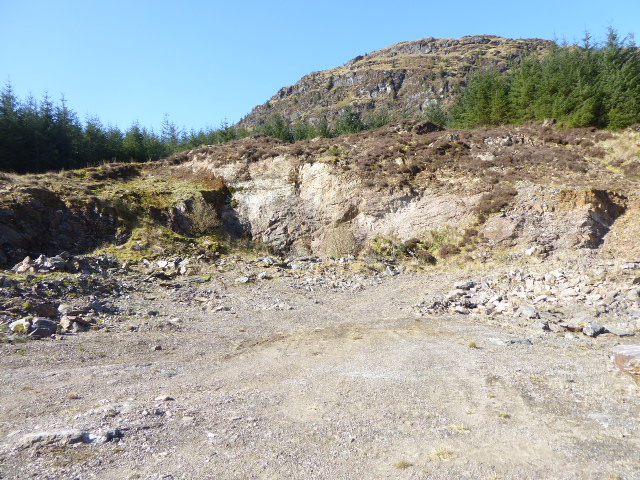
And then a fifth quarry, more or less abandoned. Five quarries in less than five kilometres as the crow flies. In what sense is this level of quarrying sustainable? How much of the hillside will have been removed in 200 years time?
The Lochgoilhead Forest Management Plan was produced in 2010. It recognised the need to diversify the forest in the area, restore ancient woodland sites and improve recreational opportunity though it was silent on matters like reducing the impacts of forest roads on the landscape or the potential to create a montane scrub zone on FLS land above the plantations. It was due for review in 2020 but there is nothing on the FLS website to say that this has happened. There are relatively few plans out for consultation at present and I suspect that FLS lack the staff to do so.
The evidence on the ground from my walk suggests that the impacts of industrial forestry have intensified rather than reduced over the ten years of the plan and that neither FLS nor the LLTNPA have done anything to halt the destruction of the landscape. Don’t expect the LLTNPA, however, to ask FLS to review to what extent the objectives of the last plan have been achieved or to ask them to revise their plans in the light of the climate and nature emergencies or even the statutory aims of the National Park. The LLTNPA Convener, James Stuart, wasn’t appointed to the Strategic Advisory Group to Forestry Scotland to push for different forestry practices fitting for a National Park. The minutes of those meetings indicate that conservation and outdoor recreation are never discussed (see here). Instead, they focus on such important matters as:
- The SF website has evolved over time but without real purpose or plan and must be reviewed. We need to establish what do we – and our audience – want our website to do.
Comment: while it would be great if the regulatory body for forestry in Scotland knew what it was doing, it would be even better if it had something meaningful to say to the public, not least about conservation and outdoor recreation.
- It was agreed that we need more photos of people and staff across communications, particularly of staff in branded clothing. Need more people in photos.
Comment: so now you know what’s really crucial for the future of forestry in Scotland, staff in branded clothing and photos of people standing in front of quarries! (Extracts from minute of June 2020 (see here)). One feels very sorry for the staff working under “leadership” like this.
The three main public authorities responsible for land management in the National Park, the LLTNPA, FLS and Forestry Scotland appear incapable of either advocating or implementing real change. As a consequence, areas like that around Lochgoilhead will continue to be blighted and their landscape qualities destroyed by forestry practices until visitors, local residents and those working in the forest industry start to protest.
